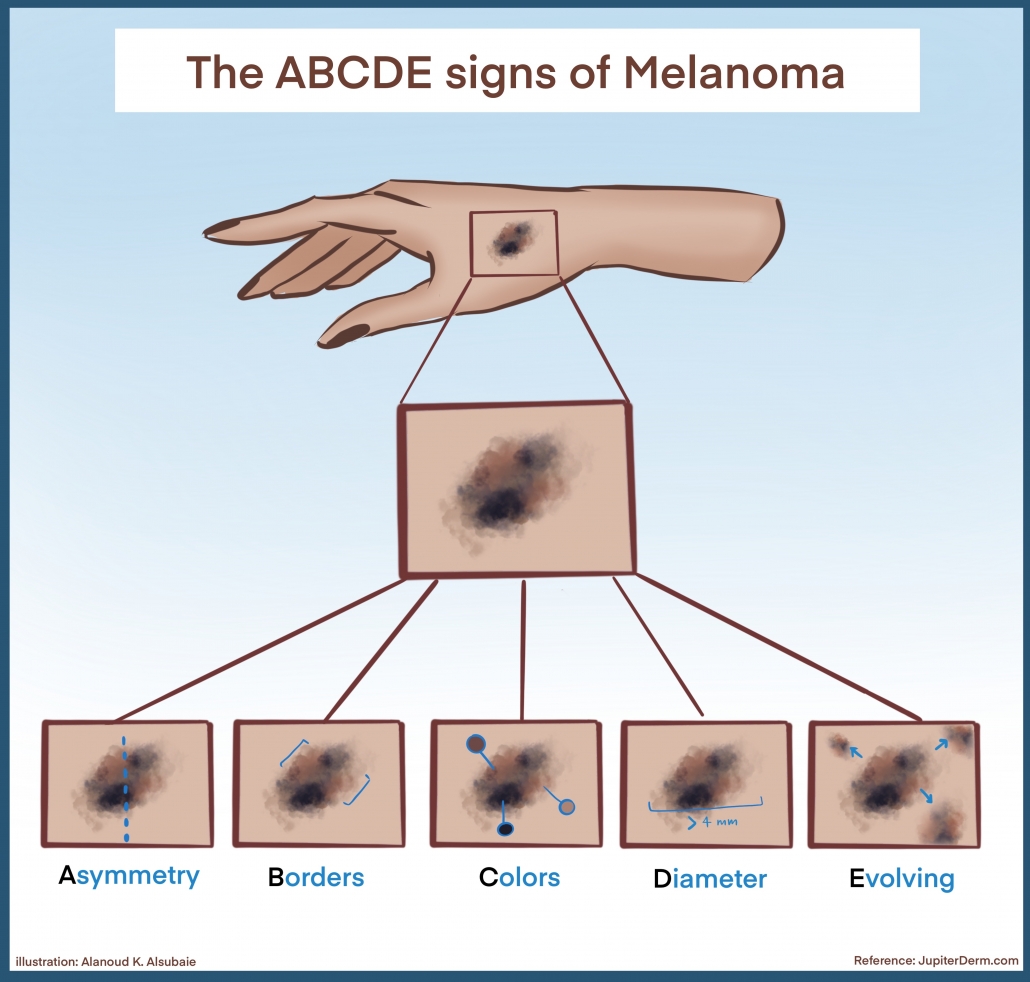Melanoma

What is melanoma?
Melanoma is a serious type of skin cancer that affects melanocytes, which are pigment-producing cells that give skin its color. Melanoma is more likely to spread and invade other organs in the body, making it more dangerous and malignant than other forms of skin cancers.
How does melanoma develop?
Transformation of melanocytes to melanoma requires a complex interaction of various factors. The cells undergo histological changes and ultimately progress to malignant melanoma. The first change that occurs is the development of benign nevi, comprising mainly of neval melanocytes, a variant of normal melanocytes but slightly larger. Nevi can remain dormant and static for decades but with certain endogenous and exogenous factors, like genetic mutations in CDKN2A and BRAF, it can progress to malignancy.
Who gets melanoma and what are the risk factors?
The strongest risk factors for melanoma are UV light exposure, family history of melanoma, previous melanoma and sun sensitivity. It affects mainly white population with fair skin, and the highest reported rate are in Australia and New Zealand. Melanoma occurs most commonly between the age of 40 to 60 years, however there has been an increase in incidence in young adults around the age of 20. The occurrence is extremely rare in children.
What are the clinical features of melanoma?
Melanocytes are found throughout the body, thereby melanoma can be present anywhere on the body, not necessarily in areas with a lot of sun exposure. It begins as a mole or freckle, frequently on the back in males and lower extremities in females, but clinical presentation varies depending on the type.
Melanoma subtypes
There are four main types of melanoma that are associated with the same growth pattern, i.e horizontal, and anatomical site predilection.
Superficial spreading melanoma
Most common type, associated with intermittent UV exposure. It can appear on an existing mole or a new mole. It is likely found on the torso in men and legs of women.
Lentigo malinga
Occurs in chronically sun-exposed individuals and it is easily detected by simple visual inspection.
Nodular melanoma
This type is rapid growing and aggressive.
Acral and mucosal melanoma
Most common type of melanoma in Asian and African population. This type is not associated with UV radiation.
Melanoma comes in many shapes, sizes and colors. Clinical diagnosis is primarily based on patient history total-body skin examination. Early detection and prevention are key in curing and preventing melanoma; applying sunscreen and UV radiation avoidance (staying indoor, avoiding tanning bed) may prevent the development of melanoma.
Written by: Naif Alalshaikh, Medical student.
References
- “Melanoma.” DermNet
- Miller, Arlo J., and Author AffiliationsFrom the Dermatopathology Unit. “Melanoma: Nejm.” New England Journal of Medicine, 28 Sept. 2006,
- “Melanoma.” The Skin Cancer Foundation, 28 Apr. 2022,
- Melanoma – Edisciplinas.usp.br.

